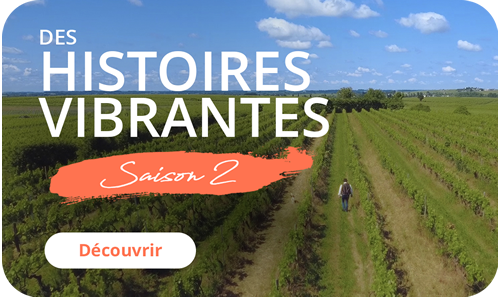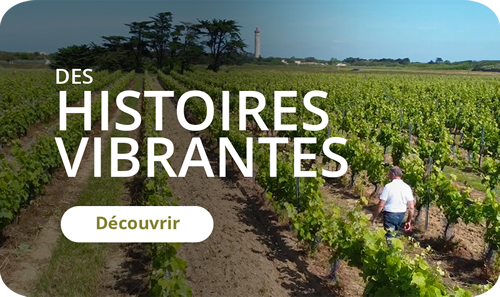The rich, bold aroma of Pineau des Charentes is the fruit of unique expertise. For more than 4 centuries, our winegrowers and cellar masters have shaped this delicate wine by adhering closely to traditional production methods passed down through generations. The grape must and cognac eau de vie come from the same estate, the same vineyard, and are made by the same people. Their expertise is passed on from generation to generation.
The greatness of Pineau des Charentes lies in the five essential stages of its production.
Harvest
Once the grapes have gorged themselves on sunshine and the aroma of the Charentes soil, they are picked from late September onwards. This process takes about one month.
Pressing
The grapes are then pressed: white ones as soon as they are harvested, and red ones after several hours of maceration, to give them the beautiful bright colour typical of Pineau des Charentes.
Mutage
Next comes mutage, which is the addition of alcohol and the key component in the production process. Cognac eau de vie aged for at least one year and containing at least 60% alcohol is added to the grape must, to stop it fermenting and add sweetness.
Ageing
Pineau des Charentes must aged in oak barrels. During this last phase, the wine acquires its last notes of aromas.
Pineau White is aged for at least 18 months, including 12 months in barrels, while Pineau Rosé and Red are aged for 12 months, of which 8 months are in barrels.
This patience pays off, giving Pineau des Charentes a harmony of distinctive and intricate aromas and a roundness and freshness on the palate. Its bouquet can be further enhanced by ageing in oak barrels for 5 or even 10 years, to create Old and Very Old Pineau des Charentes.
Bottling
Because its AOC status is subject to very strict rules, Pineau des Charentes must be bottled in the region where it is produced.


